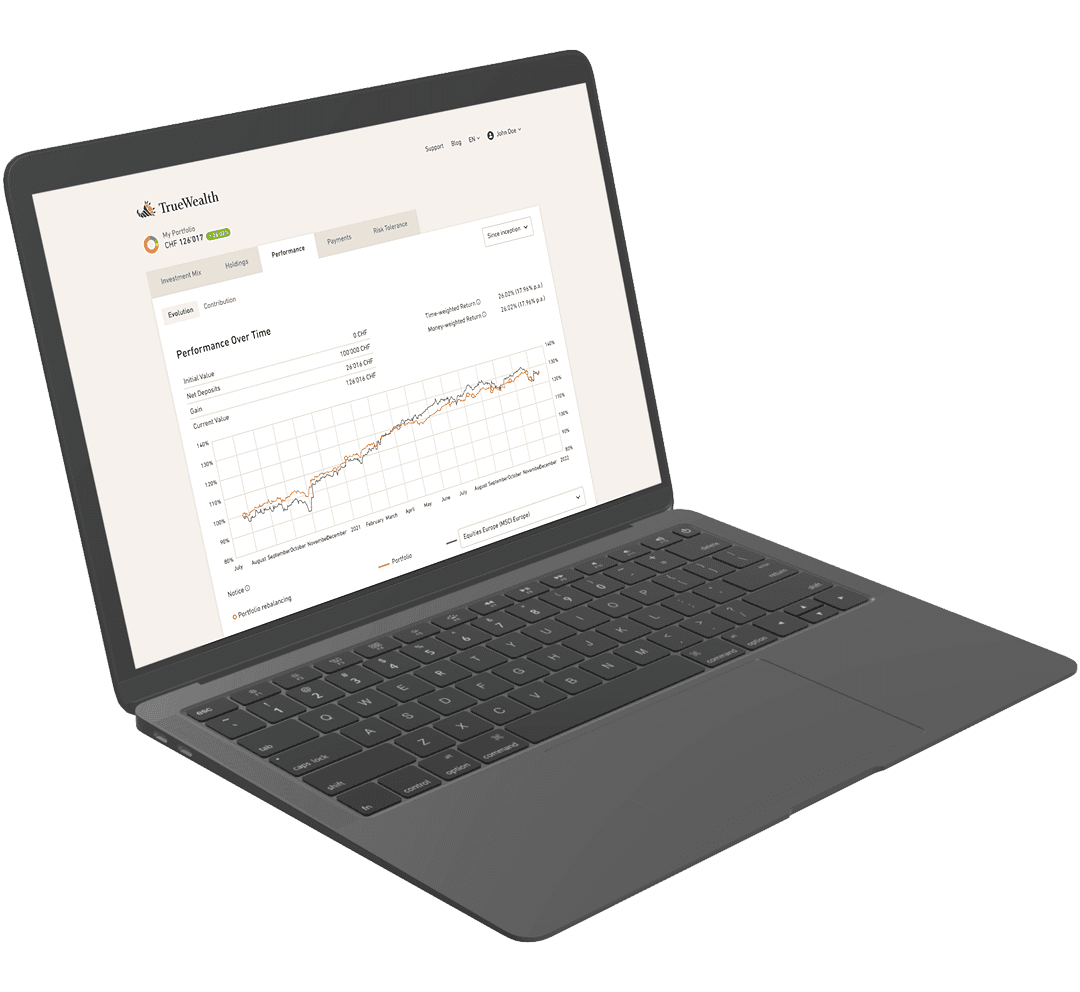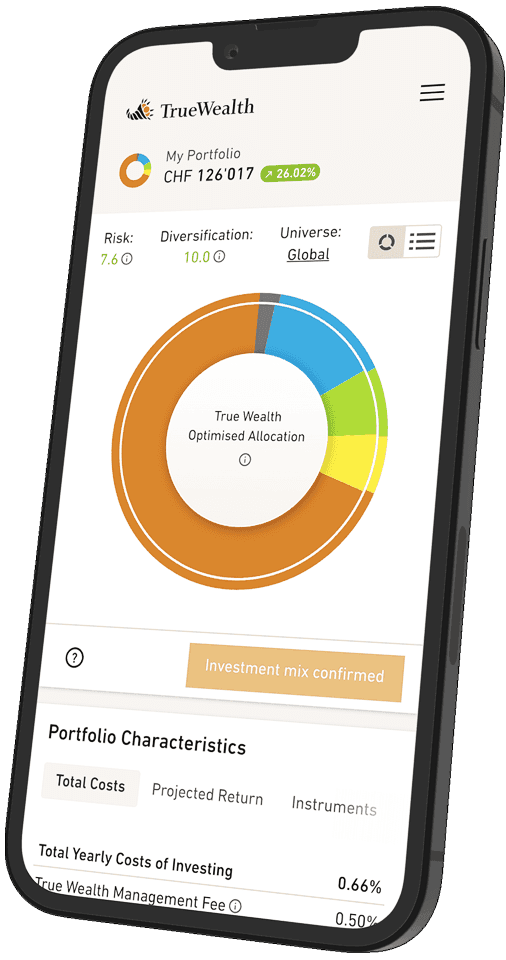#22 The second most important asset class: bonds
Bonds and equities are often mixed by investment professionals. What exactly are bonds? We take a closer look at bonds as an asset class, weigh up their advantages and disadvantages and analyze how they behave when interest rates change.
Equities and bonds are very different, apart from the fact that both asset classes are securities. While shares are securities on equity capital, bonds are securities on debt capital, i.e. securitized debt instruments. Bonds are also known as debentures or annuities. Equity does not have to be repaid, but debt does.
The global bond market is worth around 130 trillion dollars, making it slightly larger than the equity market. One third of the bond market is made up of corporate debt instruments and the remaining two thirds of public sector debt instruments. These are largely issued by sovereign states and are referred to as government bonds. In the case of Switzerland as a debtor, these are known as «Swiss Confederation bonds».
How do bonds work?
Bonds are debt instruments issued by companies or the public sector in order to raise capital. The issuer undertakes to make regular interest payments, also known as coupons, to the bondholder and to repay the nominal value of the bond at the end of its term.
What types of bonds are there?
There are different types of bonds. The four most important types are government bonds, corporate bonds, high-yield bonds and inflation-linked bonds.
High-yield bonds
High-yield bonds represent an opportunity to achieve a higher return, but are associated with increased risk. These bonds are issued by issuers, whether governments or companies, that have a considerable issuer risk. This means that there is no certainty that the issuer will be able to repay the interest and possibly even the nominal value.
As a rule, issuers of such bonds receive poor credit ratings from rating agencies. As a result, they are unable to meet the usual creditworthiness requirements and the default risk for investors is increased. To compensate for this risk, these issuers have to pay their creditors higher interest rates.
Bonds with such risks are generally considered speculative by rating agencies. Investors who invest in high-yield bonds accept the risk that they will only get back some or all of the capital they have invested.
Inflation-indexed bonds
Inflation-indexed bonds offer investors an opportunity to protect themselves against the effects of inflation by linking the interest rate and/or the nominal value to the price level. This means that the issuer pays back either a higher interest rate and/or a higher nominal value if inflation rises.
The interest and repayment amounts of such bonds are closely linked to the current inflation rate. This offers at least partial protection against currency devaluation.
Features of bonds
The most important features of a bond include the nominal value, the term, the interest cadence and the interest rate.
The nominal value
The most important feature is the nominal value, as this is what you as the investor will receive back at the end of the term. When bonds were still printed on paper and physically held, the nominal value was printed on the bond. Fun fact: In the past, you could take a bond to a bank counter, cut off the coupon and then receive the interest in return. This is why it is still called a coupon today, from the French «couper», which means «to cut».
The term
The second most important characteristic is the term of the bond, also known as «face value» or «par value». For the duration of the term, the holder of a bond must wait for repayment of the nominal value. Typically, the term ranges from a few years to several decades. Terms of over 30 years are very rare, but there have been a few exceptions in the past. Argentina, Mexico, and Austria have also issued 100-year bonds, as have companies such as Walt Disney and Coca-Cola. However, these are associated with an extremely high interest rate risk.
The interest rate cadence
The interest cadence indicates how often interest is paid out. For example, annually, semi-annually or quarterly. There are also bonds without interest payments, so-called «zero-coupon bonds».
The interest rate
The interest rate, also known as the coupon, defines the amount of regular interest payments that the issuer pays out to investors. It is usually fixed, but can also be linked to a reference interest rate and is always defined as a percentage of the nominal value, not of the issue price.
How do bonds behave on the market?
Bonds are often, but not always, issued at 100 percent of the nominal value. Repayment must be made at par, otherwise there is a default. After the bond is issued, its price is determined by supply and demand on the market. If a bond happens to be quoted at par, this is referred to as «par». If the bond is quoted above par, it is quoted «above par» and if it is quoted below par, it is quoted «below par». The two most important influences on the price of a bond are the general interest rate level and the creditworthiness of the issuer.
Example: A bond with a nominal value of CHF 100,000, a remaining term of 10 years, an interest coupon of 1%, i.e. CHF 1,000 per year, at an interest rate level of 1%, has a market value that is identical to its nominal value, i.e. CHF 100,000. However, if the general interest rate rises from 1% to 2%, the bond loses value and is only worth around 91,000 francs. In other words, a price loss of almost 9%. Conversely, if interest rates fall by 1% to 0%, the value of the bond rises to 110,000 francs, a proud price gain of 10%. In the case of a bond with a short maturity, the price gain would only be 1%. In the case of a bond with a long term to maturity of 30 years, the price gain would be 30% if interest rates were to fall by 1%, and a price loss of around 22% if interest rates were to rise by 1%.
As we can see, the value of a bond rises when interest rates fall, and vice versa. The longer the remaining term of a bond, the greater the change. In other words, the longer the term of a bond, the more it reacts to rising interest rates by losing value. This is known as interest rate risk, or interest rate risk. Because bonds with a longer term have a higher risk, they also have a higher risk premium. This explains why the yield curve normally rises from left to right and why longer-dated bonds usually have a higher yield than shorter-dated bonds. But not always. There are also phases in which it is the other way round, i.e. the yield curve descends from left to right. This means that long-term interest rates are then lower than the short-term interest rates set by the SNB. Such a yield curve is called an inverted yield curve.
If you are interested in this: Our Bond Price Calculator illustrates how the price of a bond changes when the general market environment changes.
A second important risk factor besides the interest rate risk is the creditworthiness of the issuer, also known as the credit rating . The creditworthiness of major issuers and countries is regularly assessed by rating agencies. The three largest rating agencies are S&P, Moody's and Fitch. Each agency uses different rating scales. At S&P, for example, AAA is the best rating and everything between AAA and BBB is so-called «investment grade», i.e. good creditworthiness.
All in all
What do you need to know about bonds as an investor? You need to know that bonds are a very broad asset class. From virtually risk-free to equity-like risk with equity-like returns, everything can be found in this asset class and they are very diverse. With the exception of inflation-linked bonds, bonds do not offer direct protection against inflation, but they can help you stabilize and diversify your portfolio.
The easiest way to invest broadly in bonds is through ETFs. There are now many bond ETFs that passively track a bond index. Their advantages are obvious: low costs and high diversification. At True Wealth, we also use ETFs on all sub-categories: government bonds, corporate bonds, high-yield bonds and inflation-linked bonds, depending on the risk profile.
Has this article given you an overview, or do you still have questions on the subject? Send me an e-mail.
About the author

Founder and CEO of True Wealth. After graduating from the Swiss Federal Institute of Technology (ETH) as a physicist, Felix first spent several years in Swiss industry and then four years with a major reinsurance company in portfolio management and risk modeling.

Ready to invest?
Open accountNot sure how to start? Open a test account and upgrade to a full account later.
Open test account